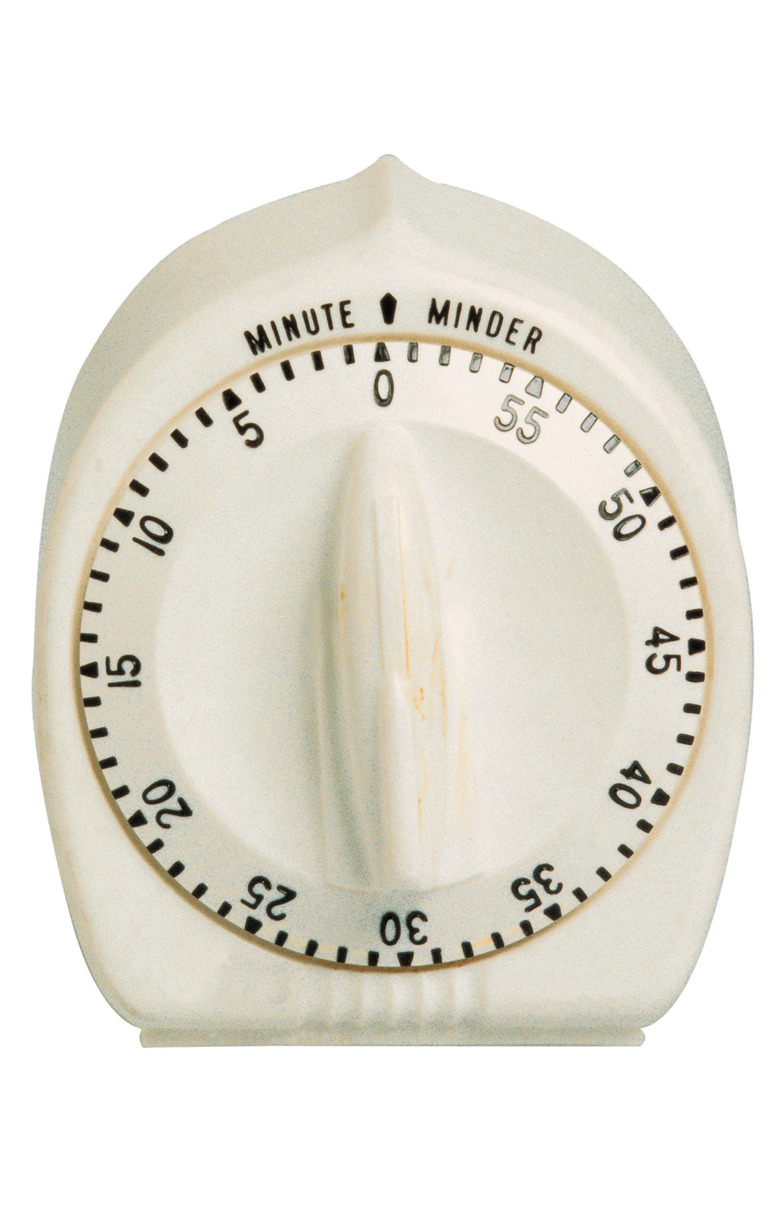How Does A Mechanical Timer Work?
Mechanical timers seem like innocuous devices found in kitchens throughout the world. However, the mechanical timer provided a pivotal function when it first appeared during the industrial revolution, allowing machines and workers to operate precisely on timed cycles. Mechanical timers use relatively simple technology that includes gears, springs, an escapement and a pendulum or a balance wheel. These parts work together to ensure the proper operation of the timer.
Basically
Basically
Mechanical timers depend upon force provided by the user. When you turn the dial to set a mechanical timer, you also provide the power needed by the timer to complete its cycle. Turning the timer compresses a spring. As this spring unwinds, it turns gears, which in turn causes the dial on the timer to move. When the spring unwinds completely, the timer finishes it cycles. This triggers the sounding of the bell that occurs at the end of mechanical timer cycles.
Escapement
Escapement
The escapement controls the speed at which the spring within a mechanical timer unwinds. In doing so, the escapement ensures that a unit stays in sync with time. Basically, an escapement constitutes a type of catch. This catch catches, or stops, the teeth of the gears of a mechanical timer, then releases them. This catch-and-release cycle creates a rhythm that keeps a mechanical timer in sync with the passing of time, allowing a unit to accurately keep track of time.
Pendulum or Balance Wheel
Pendulum or Balance Wheel
One of two devices controls the rhythm of the catch-and-release cycle of an escapement in a mechanical timer, a pendulum or a balance wheel. A pendulum swings back and forth at a rate determined by its length and the weight at its bottom. A balance wheel turns one direction then the other, back and forth, in a continuous cycle, with force provided by a tiny spring. The timing of the pendulum or balance wheel controls the length of time an escapement catches the teeth of a timer gears, determining a timer's ability to accurately keep time.
More Information
More Information
Well-built mechanical timers with good mechanical parts should keep accurate time and last. However, mechanical parts suffer physical wear and tear that may cause problems with a timer and affects its ability to keep accurate time. You can take a mechanical timer to any shop that repairs watches or clocks for refurbishment rather than purchase a new one. Mechanical timers appear in numerous devices in addition to standard kitchen timers. You can purchase timer attachments for spigots to control hoses, and numerous appliances, such as toaster ovens, contain mechanical timers.
